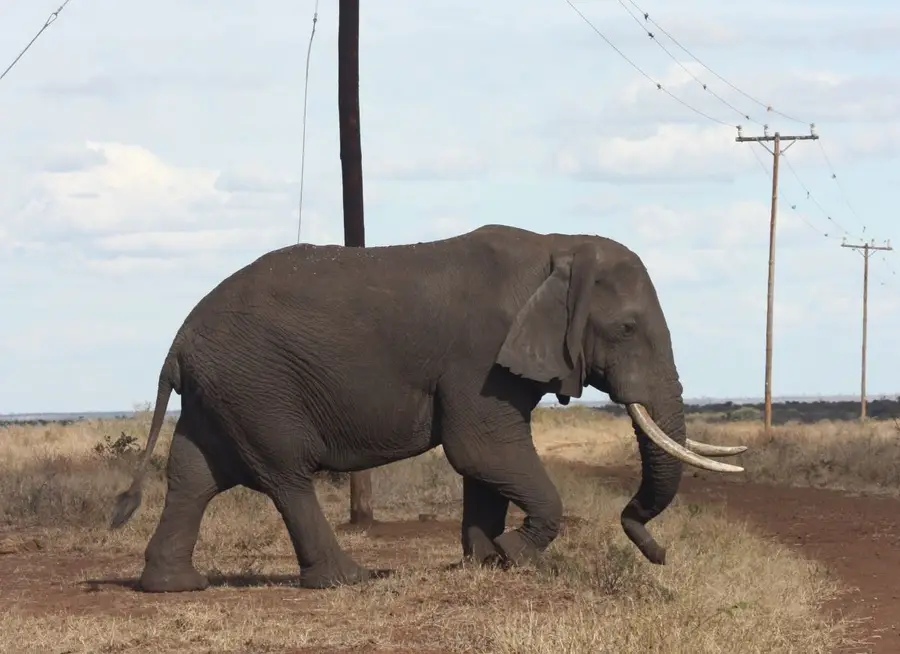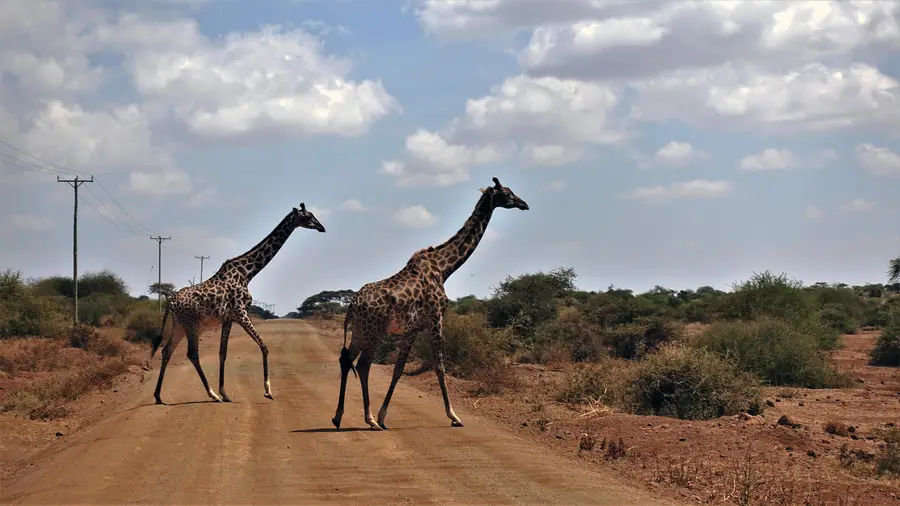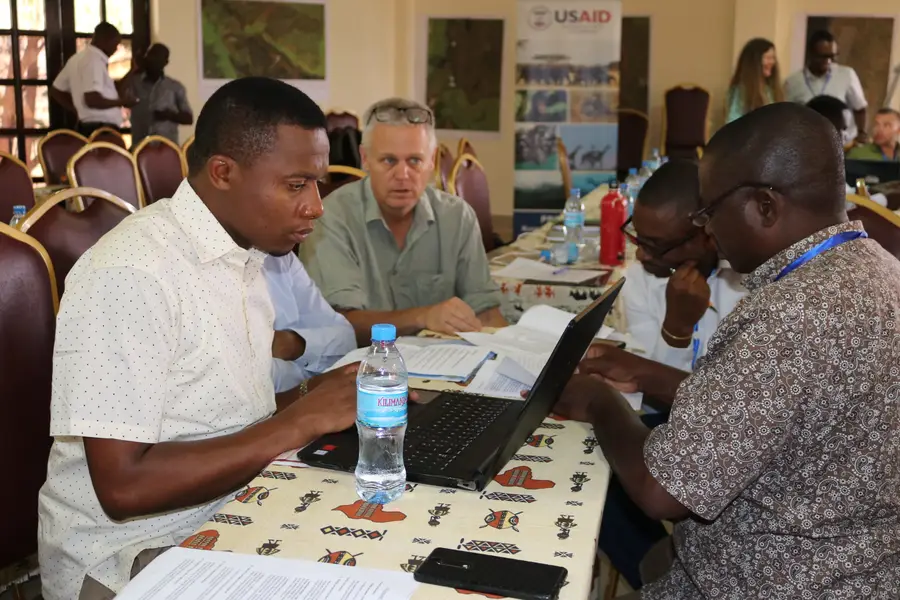This Earth Day, we are busting three myths related to human-wildlife conflict. In fact, we’d like to flip the script entirely and show that the two can coexist in harmony.
To achieve this, RTI approaches wildlife conservation from all directions. In thinking expansively and holistically about the issue, RTI has identified new opportunities for wildlife conservation and win-win solutions that cut across development sectors.
Below are three examples of how RTI is turning this knowledge into practice for a new approach to combat human-wildlife conflict.
Myth 1: Wildlife conservation means sacrificing social and economic development
Wildlife conservation is often perceived as being at odds with international development’s traditional focus on macroeconomic growth, given conservation’s focus on preserving biodiversity. However, this long-term aim doesn’t preclude economic benefits in the near-term – and it can even multiply them. It requires a more thoughtful approach, but it is possible.
Wildlife conservation for economic growth put into practice
One example is RTI’s partnership with Chem Chem, a private eco-tourism company in Tanzania. The company’s luxury lodges are located on land between two national parks.
Chem Chem sought to protect and restore elephant and other wildlife movement routes through this area as human activity, including poaching, had encroached upon it. Through the USAID Promoting Tanzania's Environment, Conservation, and Tourism (PROTECT) project, RTI helped Chem Chem connect with the surrounding communities to understand their concerns and develop a plan that benefited wildlife and the communities at the same time.
Transforming human-wildlife conflict into ecotourism
In setting up a tourism business on this land rather than opening it for hunting, Chem Chem created local jobs and economic growth that depend on wildlife: Elephants and other wildlife draw visitors from around the world. With support from PROTECT, Chem Chem brought together the community, public sector, and private sector to collaboratively conduct anti-poaching patrols to further protect these animals and, by association, local economic growth. Many people living in surrounding communities work at Chem Chem and have fewer incentives to encroach on the land, poach animals, or hunt them for food. Poaching has since decreased by an astonishing 66% from 2016 to 2019. With an influx of tourists to the area, Chem Chem’s business and nonprofit association made enough to pay surrounding communities $800,000 in 2019 for conservation use of the land.
RTI continues to partner with Chem Chem through the USAID Tuhifadhi Maliasili Project.
Myth 2: Infrastructure investments hurt wildlife and conservation efforts
When human infrastructure is built in areas used by wildlife, animals put themselves at risk to cross highways and bridges or disrupt farms and communities, resulting in economic losses and, in some cases, even death to both humans and animals.
Contrary to common belief, further infrastructure investment can actually help ease human-wildlife conflict and promote wildlife conservation. Wildlife corridors reduce these risks and enable humans and animals to dwell in harmony. In some cases, these corridors entail setting aside land for animal passage. In other cases, they can involve building a bridge or highway specifically for wildlife.
Infrastructure as human-wildlife conflict solutions put into practice
Through the USAID PROTECT project, RTI facilitated a partnership between a local conservation organization – the Southern Tanzania Elephant Program (STEP) – and the Tanzanian government to identify areas where human infrastructure, like roads and farms, were cutting off wildlife routes and causing conflict between humans and animals.
They identified the need for a tunnel in the Nyerere Selous-Udzungwa Corridor to protect wildlife, especially elephants. USAID PROTECT and STEP successfully advocated for the government to incorporate a tunnel into its plans to pave a major thoroughfare, which would enable vehicles to drive at faster speeds. The tunnel was designed specifically for elephants to pass underneath the paved highway, thus separating them from the human drivers above.
The Government of Tanzania recently completed construction of the tunnel and is setting up structures to funnel animals toward the tunnel for safe passage. As true wildlife conservationists know from experience, once animals know where to find safe passage, they will use it consistently.
RTI continues to work with STEP and other local partners in Tanzania to restore wildlife corridors.
Myth 3: Wildlife conservation considerations are not relevant to development projects outside of the environment sector
In development, it can sometimes seem like wildlife conservation and investments in other sectors, like infrastructure, are at odds. However, wildlife conservation’s benefits are cross-cutting and conservation considerations can even increase the impact of infrastructure investments.
Integrating wildlife conservation across sectors put into practice
Take Africa for example. Its development depends on affordable and reliable access to energy, and demand continues to grow for resources like electricity. As new energy infrastructure is built, wildlife increasingly encounter structures like power lines, wind turbines, and power stations. This can have devastating consequences for animals, as well as for the humans that depend on that electricity and the utilities that deliver it.
USAID’s Power Africa-funded East Africa Energy Program sought to change this. The project developed a guide to reducing and mitigating harmful wildlife interactions with utility infrastructure that delivers electricity. Recommendations include ways to make planned or existing infrastructure safer for animals, while ensuring their interaction with it doesn’t cause outages or maintenance burdens for utilities and their customers. In other words, making electrified infrastructure safer for wildlife makes it more reliable, sustainable, and cost-effective for humans. The Kenyan government is using the guide to complement its environmental and social management framework for infrastructure development.
Thinking creatively and thoughtfully about ways to integrate wildlife conservation across sectors – and keeping local solutions at the forefront – is essential to a sustainable approach to development.

A new paradigm for human and wildlife harmony
While wildlife conservation has been perceived in the past as delivering dividends in the far future, its benefits are increasingly recognized as impacting our world today. Benefits like keeping electricity flowing for customers, reducing crashes and slowdowns on highways and tarmacs, and preserving natural resources that increase tourism and its corresponding economic gains and help us combat climate change.
A new paradigm begins to emerge from this evidence, one that puts human and wildlife considerations side-by-side with the understanding that planetary and human health depend on harmony – and balance – between the two.
Often when development practitioners talk about wildlife conservation solutions, we are talking about preserving species and landscapes. But the preservation of human well-being needs to be a part of the equation too.
Applying a planetary health approach to development allows us to consider the complexity of planet earth and human existence on it. This may take extra effort and thought when designing and implementing development projects, but the benefit of an integrated, planetary health approach is well worth it.
Human and animal well-being don’t have to be competing priorities. Rather, accounting for both in development projects – no matter the sector – is the new way to align.
Learn more about RTI’s work in wildlife conservation.




